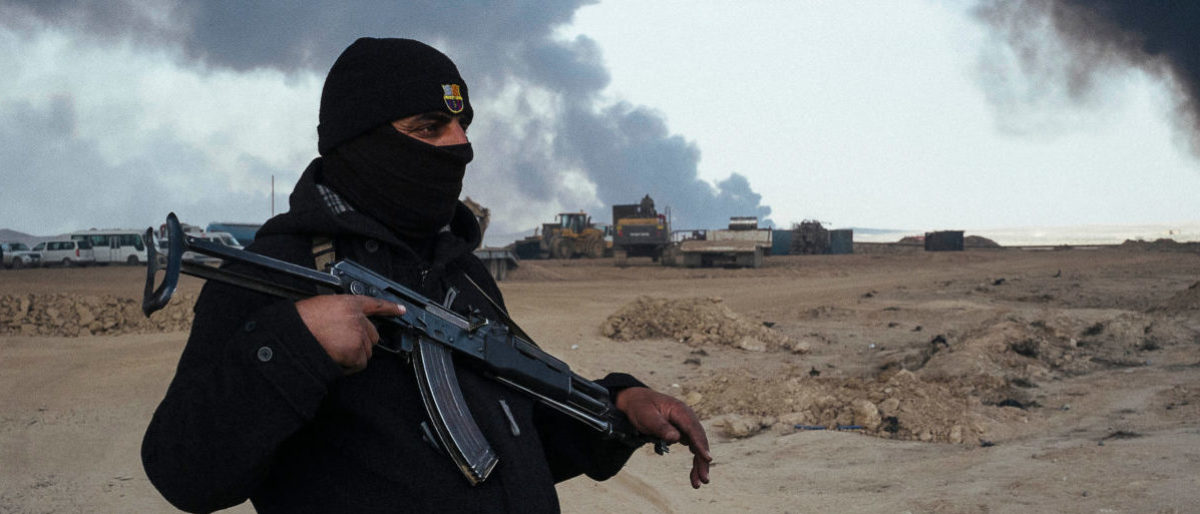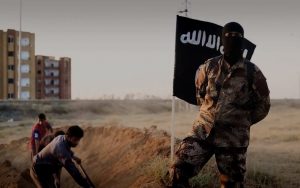Feature
Man once lost job as salesman joins ISIS, make new beginning now

Mumbai: Jamil Ansari (name changed) runs a mobile phone repair shop in Maharashtra’s Beed district.
But, nobody would imagine that only two years ago, he was on the verge of joining the dreaded terror outfit ISIS by travelling to Iraq, thousands of kilometres away.
Thanks to an initiative of the Maharashtra Anti- Terrorism Squad (ATS), Ansari changed his mind and underwent an employment training programme after escaping clutches of the Islamic State of Iraq and Syria’s (ISIS) online ‘recruiters’ who had almost radicalised him.
He is not the only one. There are many such young men in Maharashtra, mainly in the industrially backward Marathwada region, who had once fallen victim to ISIS’ propaganda but are now leading a normal life with the help of the employment training programme, a senior ATS official told media persons.
Ansari, a 35-year-old graduate, lost his job as a salesman in 2016 and began spending a lot of time surfing online, where he came in contact with some ISIS sympathisers and soon got radicalised.
“His online activities brought him under our scanner,” the official said.
The ATS sleuths realised that Ansari had become a victim of ISIS propaganda and he was counselled in a bid to de-radicalise him, he said.
The official said the ATS runs a de-radicalisation programme for such people to once again join the mainstream with the help of religious leaders and clerics.
But the real problem was that Ansari had no job, and there were many more like him, he said.
In Marathwada, the ATS in the last two years identified as many as 400 young men who were suspectedly under the influence of ISIS.
In all the cases, the recruiter started chatting with his target about “atrocities” on Muslims in India to gauge the person’s views, the official said.
After the person was successfully radicalised, he would be taught how to make Improvised Explosive Devices (IEDs) or other weapons, he said, adding that some were also encouraged to join the ISIS in Iraq, where the militant outfit once controlled large swaps of territory.
Man once run Mobile repair shop joins ISIS, now looking for new start:
Notably, the ATS last month arrested nine men from Aurangabad and Thane districts for allegedly planning chemical attacks with an intent to cause mass casualty at public events by contaminating food and water, he pointed out.
In 2018, the ATS had arrested a 36-year-old man from Parbhani district who came in contact with ISIS and received instructions on how to make IEDs.
He made bombs and even carried out trials, the official said, adding that he was arrested along with four others before he could use the IED for a terrorist act.
ATS chief Atulchandra Kulkarni said they realised that unemployment was one of the major reasons for such men from the Muslim community most of whom were from Marathwada — getting radicalised online and falling into ISIS’ trap.
“The challenge was to bring these people back to normal life, and we found a solution in the Rural Self-Employment Training Institutes (RSETIs), run by the Union rural development ministry,” said Kulkarni.
As many as 239 such men were imparted training at these institutes last year. Besides, the anti-terror cells formed at police station-levels identified 15 men who were also trained in self-employment, another police official said.
Thirty such men secured bank loans after undergoing training and started their own businesses, Kulkarni said.
Appreciating the initiative, RSETI authorities agreed to train the candidates short-listed by ATS on priority basis.
The ATS also approached the Syndicate Bank and the Bank of Maharashtra, which agreed to offer loans to the short-listed men after they underwent training, he said.
The initiative began with some 270 young men, who were trained in mobile phone repairing. Another batch is now receiving training in fitting electric wires, a police official said.
Ansari is one of the examples of this initiative’s success. After being imparted counselling, he was recommended for a short training course in mobile repairing at an RSETI, he added.
Now, he runs a small mobile repair shop of his own, far away from Iraq.
Entertainment
Meghalaya Reserves Legalized Gambling and Sports Betting for Tourists

The State Scores Extra High on Gaming-Friendly Industry Index
Meghalaya scored 92.85 out of 100 possible points in a Gaming Industry Index and proved to be India’s most gaming-friendly state following its recent profound legislation changes over the field allowing land-based and online gaming, including games of chance, under a licensing regime.
The index by the UK India Business Council (UKIBC) uses a scale of 0 to 100 to measure the level of legalisation on gambling and betting achieved by a state based on the scores over a set of seven different games – lottery, horse racing, betting on sports, poker, rummy, casino and fantasy sports
Starting from February last year, Meghalaya became the third state in India’s northeast to legalise gambling and betting after Sikkim and Nagaland. After consultations with the UKIBC, the state proceeded with the adoption of the Meghalaya Regulation of Gaming Act, 2021 and the nullification of the Meghalaya Prevention of Gambling Act, 1970. Subsequently in December, the Meghalaya Regulation of Gaming Rules, 2021 were notified and came into force.
All for the Tourists
The move to legalise and license various forms of offline and online betting and gambling in Meghalaya is aimed at boosting tourism and creating jobs, and altogether raising taxation revenues for the northeastern state. At the same time, the opportunities to bet and gamble legally will be reserved only for tourists and visitors.
“We came out with a Gaming Act and subsequently framed the Regulation of Gaming Rules, 2021. The government will accordingly issue licenses to operate games of skill and chance, both online and offline,” said James P. K. Sangma, Meghalaya State Law and Taxation Minister speaking in the capital city of Shillong. “But the legalized gambling and gaming will only be for tourists and not residents of Meghalaya,” he continued.
To be allowed to play, tourists and people visiting the state for work or business purposes will have to prove their non-resident status by presenting appropriate documents, in a process similar to a bank KYC (Know Your Customer) procedure.
Meghalaya Reaches Out to a Vast Market
With 140 millions of people in India estimated to bet regularly on sports, and a total of 370 million desi bettors around prominent sporting events, as per data from one of the latest reports by Esse N Videri, Meghalaya is set to reach out and take a piece of a vast market.
Estimates on the financial value of India’s sports betting market, combined across all types of offline channels and online sports and cricket predictions and betting platforms, speak about amounts between $130 and $150 billion (roughly between ₹9.7 and ₹11.5 lakh crore).
Andhra Pradesh, Telangana and Delhi are shown to deliver the highest number of bettors and Meghalaya can count on substantial tourists flow from their betting circles. The sports betting communities of Karnataka, Maharashtra, Uttar Pradesh and Haryana are also not to be underestimated.
Among the sports, cricket is most popular, registering 68 percent of the total bet count analyzed by Esse N Videri. Football takes second position with 11 percent of the bets, followed by betting on FIFA at 7 percent and on eCricket at 5 percent. The last position in the Top 5 of popular sports for betting in India is taken by tennis with 3 percent of the bet count.
Local Citizens will Still have Their Teer Betting
Meghalaya residents will still be permitted to participate in teer betting over arrow-shooting results. Teer is a traditional method of gambling, somewhat similar to a lottery draw, and held under the rules of the Meghalaya Regulation of the Game of Arrow Shooting and the Sale of Teer Tickets Act, 2018.
Teer includes bettors wagering on the number of arrows that reach the target which is placed about 50 meters away from a team of 20 archers positioned in a semicircle.
The archers shoot volleys of arrows at the target for ten minutes, and players place their bets choosing a number between 0 and 99 trying to guess the last two digits of the number of arrows that successfully pierce the target.
If, for example, the number of hits is 256, anyone who has bet on 56 wins an amount eight times bigger than their wager.

























